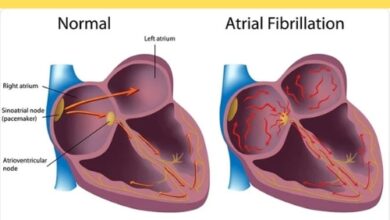How Long You Can Have Prostate Cancer Without Knowing It

Prostate cancer should be detected early on, as with most cancers. However, because prostate cancer is mostly asymptomatic, a person may not initially realise they have the condition, according to HCA Houston Healthcare. In fact, according to CNN, signs of a prostate tumour may not appear for up to ten years. This can raise the likelihood of the disease progressing if routine prostate cancer screenings are not received.
The U.S. Centres for Disease Control and Prevention (CDC) reports that research indicates a 97% five-year survival rate in individuals with prostate cancer who were diagnosed between 2017 and 2021. For the majority of people, the survival statistics are favourable. Based on data collected over a four-year period, the majority of instances of prostate cancer were identified during the localised stage, when the cancer was limited to the prostate gland. But if the cancer is discovered to be in more advanced stages, the chances of survival decrease.
The slow progression of prostate cancer symptoms
Because prostate cancer develops slowly, it frequently goes undiagnosed. Nonetheless, early-stage symptoms may occasionally appear in those with prostates. This can involve burning or hurting when urinating or ejaculating, nocturia, erectile dysfunction, a weak urine stream, blood in the urine, or semen. Even though it can be used for a variety of medical disorders (such prostatitis or an enlarged prostate), it is advisable to speak with your doctor if you experience any strange symptoms related to your urine.
Patients with advanced or metastatic prostate cancer may present with more severe symptoms, such as pain in the back or hips, breathing difficulties, leg swelling, and chronic coughing. But according to HCA Houston Healthcare, a lot depends on which body parts the cancer has spread to. In addition to frequently spreading to the rectum, bladder, and bones, prostate cancer that has invaded the intestines can also cause symptoms such as constipation, faecal incontinence, or stomach pain.
Wait times for diagnostic tests are usually longer.
Long wait times within the healthcare system from diagnosis to treatment are another possible reason why someone may not become aware they have prostate cancer for some time. It was noted by researchers in a 2010 study that was published in the Canadian Urological Association Journal that many Canadian patients deal with this issue. According to the study, there are typically longer wait times for prostate cancer diagnosis and treatment than there are for other types of malignancies. This may have detrimental consequences for the patient’s physical and mental well-being.
The results indicated that there was an average 247-day delay between the date of suspected prostate cancer and the start of aggressive radiation treatment. Out of the 41 patients in the study, only five received a diagnosis within the four weeks that the nation’s experts prescribe, and the reasons for this were related to both the patients and the providers. However, more current 2020 data that were published in the Journal of Public Health Research indicate that wait times have been becoming better over time.
See your doctor if you experience any possible early warning indicators of prostate cancer. According to the American Cancer Society, individuals with prostate cancer should start talking to their healthcare provider about routine tests when they are 50. Between the ages of 40 and 49, people in high-risk categories, such as African American men or those with a family history of cancer, are advised to talk about beginning prostate cancer tests.




